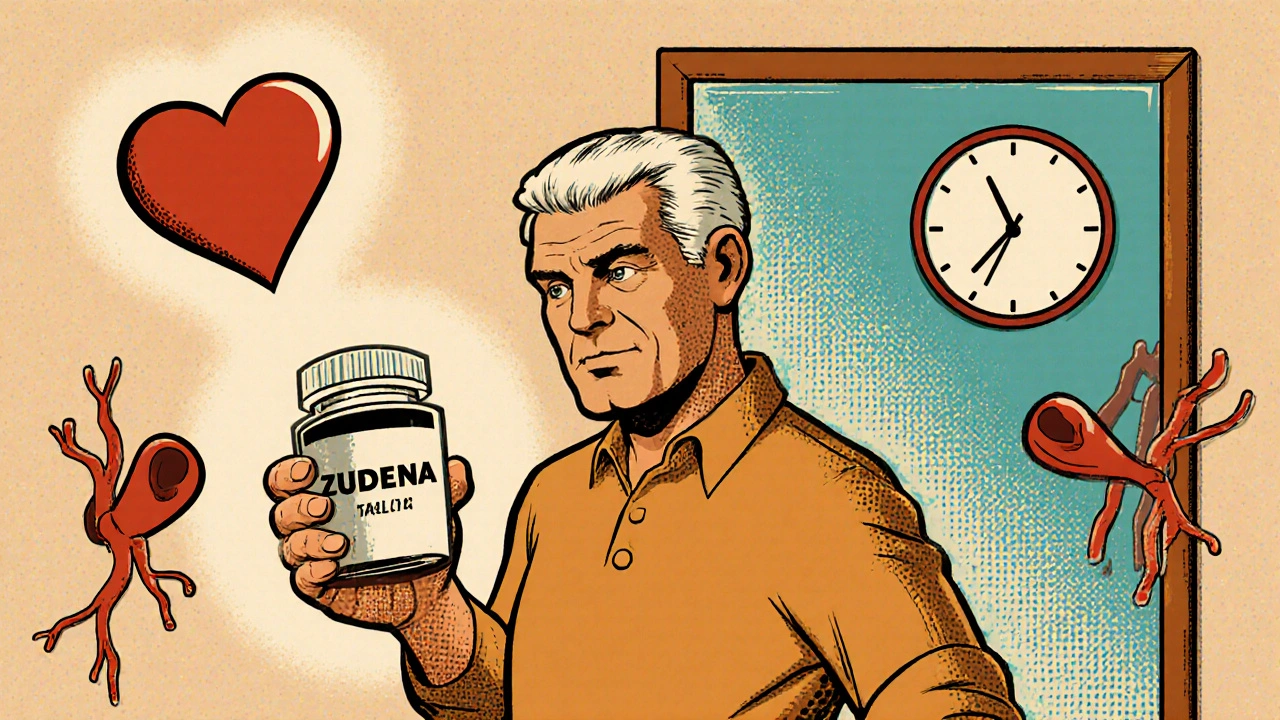June 2025 Archive: Pletal and Prilosec Explained
Welcome to the June 2025 roundup at Pharma 24/7. This month we focused on two everyday meds that many of you asked about: Pletal, a drug for leg pain caused by poor blood flow, and Prilosec, the go‑to heartburn reliever. Below you’ll find quick takeaways, practical tips, and what to watch out for when using each medication.
Pletal – What You Need to Know
Pletal, whose generic name is cilostazol, is prescribed for intermittent claudication—a fancy term for pain or cramping in the legs when you walk because blood isn’t flowing well. It works by widening the blood vessels and preventing platelets from sticking together, which improves circulation.
Most users start with a 50 mg dose taken twice a day with meals. If you tolerate it well, your doctor might bump it up to 100 mg twice daily. Common side effects include headache, dizziness, and mild diarrhea. Less often, people experience fast heartbeat or swelling in the ankles. If any of these get intense, call your healthcare provider.
Here are a few practical tips:
- Take Pletal with food to lower stomach upset.
- Avoid alcohol if you notice flushing or dizziness—it can make those symptoms worse.
- Stay active. Light walking while on the drug can boost its benefits.
- Tell your doctor about any other blood thinners or heart meds—you don’t want unexpected interactions.
Remember, Pletal isn’t for everyone. If you have a history of heart failure, uncontrolled low blood pressure, or bleeding disorders, it’s usually off the table. Always double‑check with your pharmacist or doctor before starting.
Prilosec – Heartburn Relief Explained
Prilosec (omeprazole) is a proton pump inhibitor (PPI) that cuts down stomach acid production. It’s a staple for those dealing with frequent heartburn, acid reflux, or stomach ulcers. The usual dose is 20 mg once daily, taken before a meal. Some people need a higher dose or twice‑daily dosing for severe symptoms.
Side effects are generally mild: you might notice mild stomach pain, gas, or a slight headache. Long‑term use—more than six months—has been linked to low magnesium levels, vitamin B12 deficiency, and a small rise in bone fracture risk. So if you’re on Prilosec for a while, ask your doctor about periodic blood tests.
Tips for safe use:
- Swallow the capsule whole—don’t crush or chew it.
- Take it at least 30 minutes before breakfast for best absorption.
- If you miss a dose, take it as soon as you remember, unless it’s almost time for the next one.
- Avoid sudden stops. Tapering down can prevent rebound acid production.
If you’re using Prilosec for occasional heartburn, consider lifestyle changes first: reduce spicy foods, limit caffeine, and avoid lying down right after meals. Sometimes a small tweak can cut down the need for medication.
Both Pletal and Prilosec highlight a common theme—knowing how a drug works, its side effects, and how to use it correctly makes a huge difference in outcomes. Keep these quick guides handy, and always talk to a healthcare professional if anything feels off.
That’s the June 2025 snapshot at Pharma 24/7. We’ll keep bringing you clear, practical medication info, so stay tuned for the next batch of health‑focused articles.
Pletal: Uses, Benefits, Side Effects & Tips for Safe Treatment
Jun, 27 2025
Unlock how Pletal (cilostazol) helps with leg pain from poor blood flow, its benefits, precautions, and expert tips for best results in managing intermittent claudication.
Read Article→Zudena: What It Is, How It Works, and What You Need to Know Before Taking It
Jun, 20 2025
Zudena (udenafil) is a PDE5 inhibitor used to treat erectile dysfunction. It works by improving blood flow during sexual stimulation, with effects lasting up to 13 hours. Learn how it compares to Viagra and Cialis, proper dosing, side effects, and safety tips.
Read Article→Armod: What It Is, How It Works, and When It’s Used
Jun, 14 2025
Armod (armodafinil) is a prescription medication used to treat excessive sleepiness from narcolepsy, sleep apnea, and shift work disorder. Learn how it works, its side effects, and how it compares to modafinil.
Read Article→Prilosec: What You Need to Know About This Popular Heartburn Relief Medicine
Jun, 9 2025
Prilosec is one of the go-to medications for people battling heartburn and acid reflux. This guide breaks down how it works, real-life tips for safer use, side effects to watch for, and things to keep in mind if you take it long-term. If you’re curious about managing heartburn or want to know what to expect with Prilosec, you’ll find answers right here—straight talk, no medical jargon.
Read Article→



